
Ciabatta, Blueberry Braid, Cinnamon Raisin Rolls
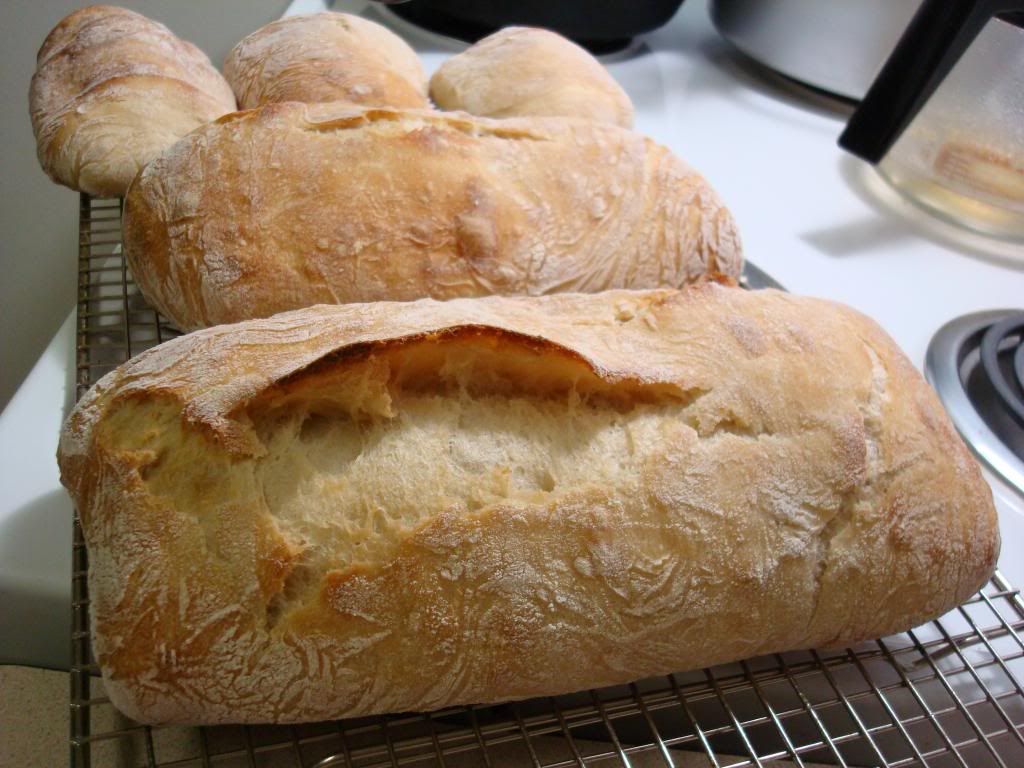
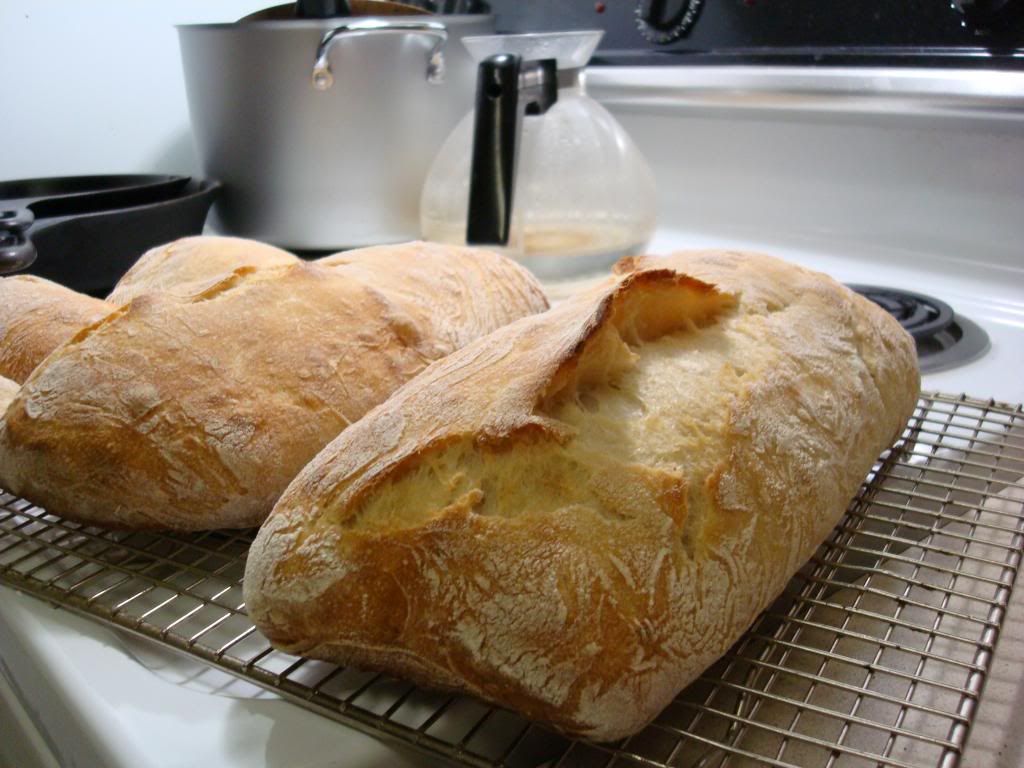
Crumb

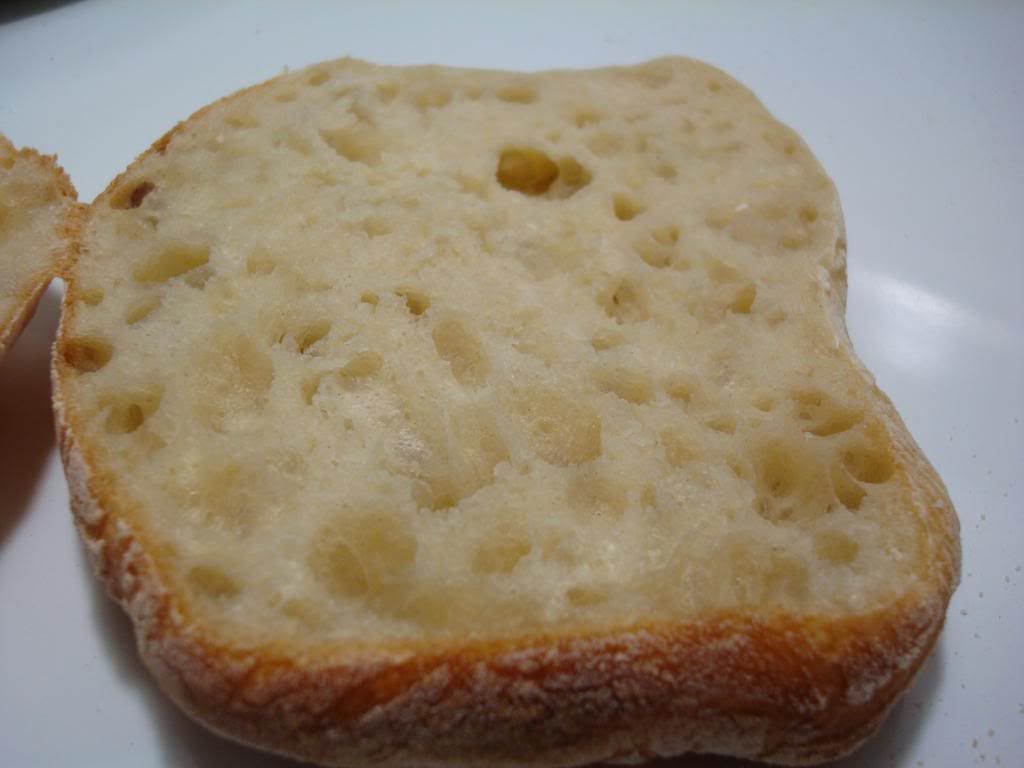
Blueberry braid with fresh blueberries
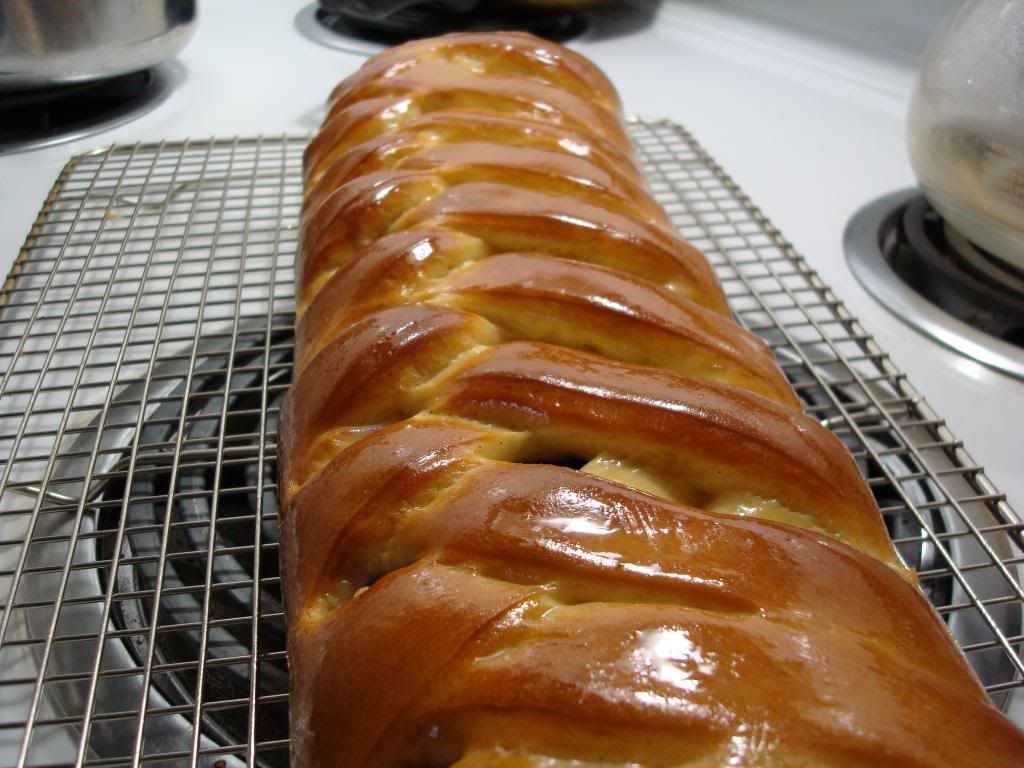
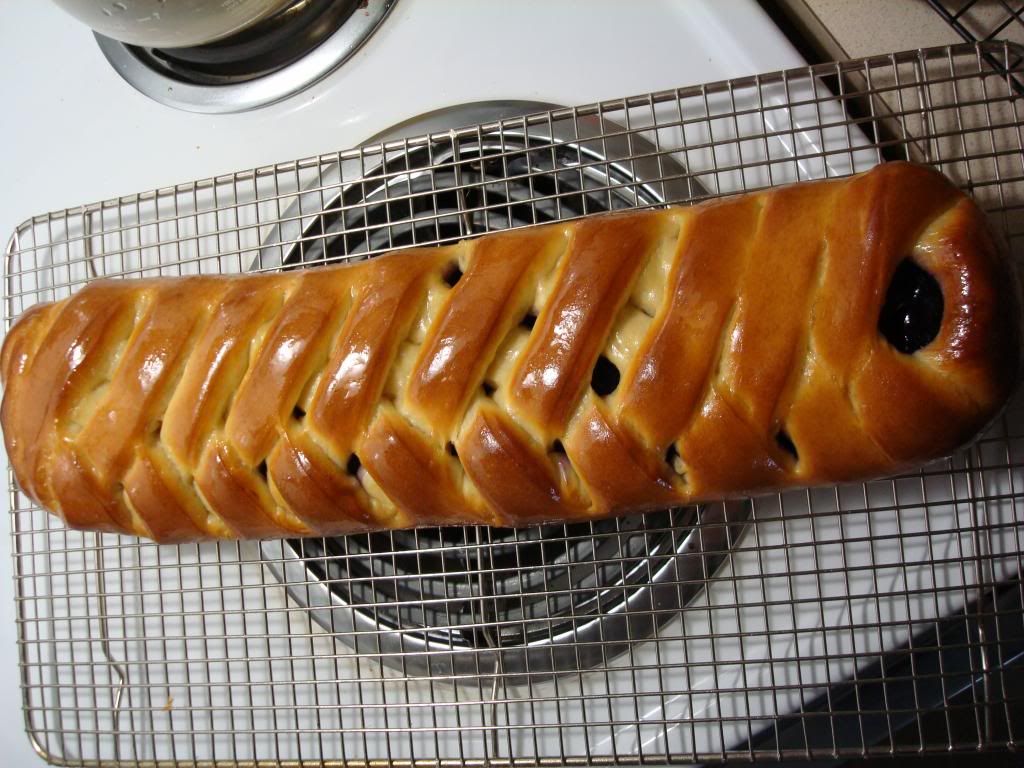
Cinnamon raisin rolls utilizing the same dough as the braid
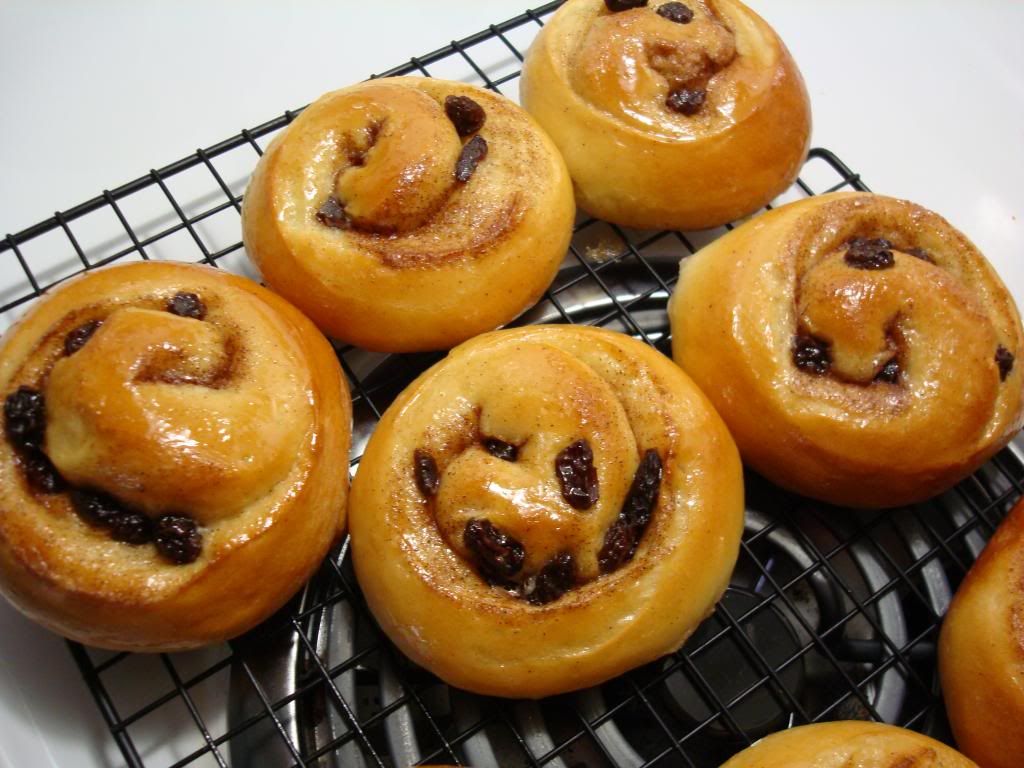



Crumb


Blueberry braid with fresh blueberries


Cinnamon raisin rolls utilizing the same dough as the braid




With raisins, walnut and coconut too.

So in research preparatory to choosing between Bosch's gargantuan Universal Plus and its svelte Compact sibling, I chanced upon the words of one reviewer who thought the latter did the better job in terms of quality of the finished product, irrespective of batch size. He believed this was due to the superior, planetary mixing action of the Compact, as opposed to the continuous unbroken motion of the Universal. Anybody here with experience on both platforms care to chime in? (Of course, now I'm wishing Bosch would release a Compact Plus, the about the same size and power as the Universal but with the overhead design of the Compact — wouldn't that be sweet!)

I might be completely barking up the wrong tree, but here's a little cross-discipline post for ya...
Looking into other things to ferment I'm toying with the idea of making my own yogurt. For that, I believe, you'd need a healthy LAB culture.
Thing is ... I have a culture - my sourdough starter - which is very healthy. And obviously it contains plenty of lactobacillae. But of course it also contains a lot of yeast, and that will be of NO use in a yogurt starter.
So here's the question - a two parter - 1) Is my idea completely bonkers or does it have potential and 2) what do I need to do to get rid of the yeast?
Two possibilities occurred to me:
One possibility is that by taking some of my sourdough starter and feeding that bit with ONLY milk I naturally make its environment unsuitable for yeast, so all I need to do is feed it like that for a few days and maybe it'll just "magically" turn into a yogurt starter over time
Another possibility: perhaps I can work with temperature and/or salt levels to achieve the goal of getting rid of the yeast. If, for example, the LABs can take 50 degrees Celsius while the yeast dies off at 40, then bringing the liquid up to 45 degrees for a while might just do the trick. Or, conversely, if yeast dies at 4% salt levels, while LABs can tolerate 8%, I can bring the mixture up to 6% and that'll take care of matters.
Anyway. Has anybody ever tried anything as daft as this?


Winter Market 2 for me (I've missed quite a few as I'm taking my weekend back for a bit). Yet another variation on the Pane Maggiore that I so adore (rhymed) This variation came out of necessity. Instead of an 18 hour wheat levain at 1:10:10 I used two levains. One a whole wheat 1:2:2 for 8 hours and an equal portion of ripe white starter. Yet again a fantastic loaf. this may be the best of the bunch but if I recall the one made with 1/2 rye sour and 1/2 white starter was also pretty darn fantastic. The mix was ideal (except the loss of perfect temp due to chilly kitchen) but the fresh grains kept fermentation vibrant. I really love this loaf and highly suggest it to all. The base formula can be found in previous posts of the same loaf. Of my favorite breads and its 40% whole grain!!!
Also I'm gonna add some pics of the Pearled/Barley, Steel Cut Oat/Flax Porridge Bread with the T3 as inspiration (used half the porridge he does and my flour blend is 78white20wheat/2rye as I don't have any high extraction flour and didn't want to make it. Pretty tasty loaf with great keeping quality.
Pane Maggiore


And The Barley/Oat/Porridge


Tartine 3 is really a fantastic book with great inspiration for utilizing whole grains and still attaining an open crumbed loaf of bread.
Josh

Friend of mine just asked me to bake 12 breads (Tartine) for Saturday evening. I’m up to the challenge :) however I can only bake two breads at time and what is more important I have only three brotforms. I do have food grade “bus tub” but I don’t know if I can keep sourdough (after bulk fermentation) in the fridge. If so, how does it affect final proofing? Can I just take dough; shape it, proof if for 3 – 4 hours and bake?


This dough was mixed in a KA K5SS stand mixer equipped with a replacement spiral hook for a KA 6 quart mixer. The preparatory sour was mixed by hand. This batch used 15 ounces (425g) of flour, yielding a 24 ounce (680g) boule.
Formula:
Preparatory Sour:
6 2/3% Dark Rye Flour
13 1/3% Water
0.12% Instant Yeast
Time:24 hours Temperature: 76°F (24°C)
Dough:
66 2/3% Bread Flour
26 2/3% Dark Rye Flour
2 1/2% Vital Wheat Gluten
1 2/3% Shortening
0.19% Granular Soy Lecithin
0.82% Instant Yeast
1.2% Ground Caraway Seed
60% Water
2% Salt
3 1/3% Sugar (added for crust color only)
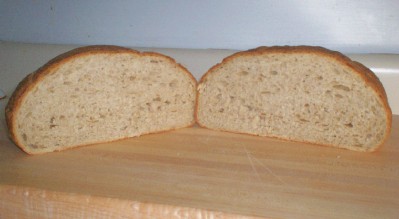
Method:
The preparatory sour and all of the dough ingredients were placed in the mixer bowl and mixed at slow speed for 4 minutes. After a fermentation time of 2 hours 15 minutes, the salt and sugar were added. The dough was then re-mixed at speed 1 for 30 seconds, then at speed 2 for an additional 2 1/2 minutes. The dough was rounded and given a ten minute rest. The dough ball was then re-rounded and panned. Proof time: 1 hour.
Since this loaf was to be baked in a convection oven, a 9 inch round pie pan was chosen. The dough was quite slack, and it spread nearly to the edge of the pan. Slashing was performed with a Mafter lame that I had purchased a few hours before. With practice (and a less sticky dough), I anticipate better results next time.

Has anyone tried this starter/culture? This is a 60% hydrated starter with whole wheat and rye flour. I'm getting "nothing results." I've tried twice. Now I'm thinking maybe my flour is too old, and am going to through those out and try again. Both times, because of the 60% hydration this starter is very dry. Maybe dry is not the correct word. But its clumpy. After mixing it goes into a B&T proof box at 80 degrees for the 22 hours, as directed. Like I say, absolutely nothing happens. After 22 hours it's the same clumpy mass with out any volume increase.. Any suggestions will be greatly appreciated.
One other question, in this starter formula/recipe is malt, diastatic malt, I have read that this is supposed to only used with flours that do not have the malt barley added. But then again this book was written in France, maybe their flours do not have the malt added like we have here in the US. Any thoughts, please?
Be well,
Bruce, SHB
Brookings, OR

This is how most of my loaves turn out, I'm not sure if that is how they are supposed to look or not. They taste very nice and as I put some olive oil in they tend to last quite well too. I do think they don't seem to be as tall as I had expected though and I have no idea if they should rise more.
Lyn